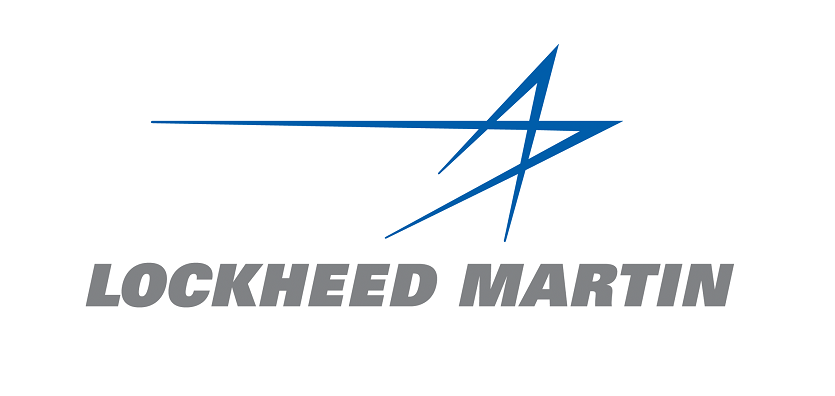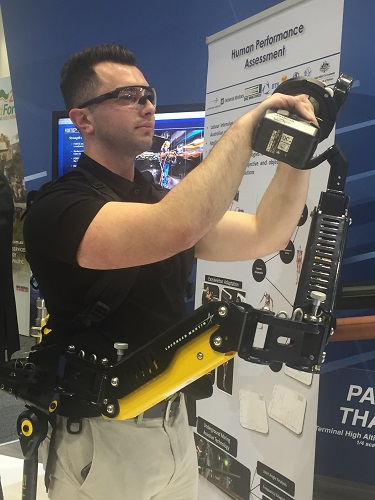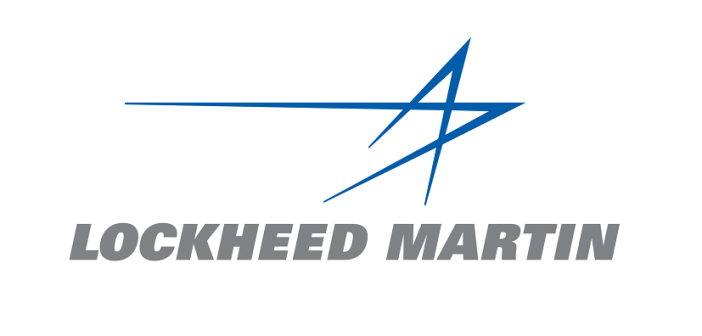
A 12-month research partnership between Lockheed Martin Australia and Deakin University’s Institute for Intelligent Systems Research (IISRI) has extended the capability of Lockheed Martin’s FORTIS Exoskeleton.
The FORTIS is an unpowered, lightweight exoskeleton designed by Lockheed Martin that makes tools weighing up to 16.3 kilograms feel weightless – reducing user fatigue and improving worker safety.
Using motion capture obtained from sensors on the arms and shoulders of exoskeleton operators and analysed by signal processing techniques, the team at Deakin’s Institute for Intelligent Systems Research and Innovation (IISRI) used biomechanics to test the ergonomic effects of using power tools on the human body.
Deakin researchers also designed and 3D-printed new attachments to expand the functionality of the FORTIS Exoskeleton, allowing it to accommodate external loads usually mounted on the back of the human body.
Speaking at Land Forces 2018 in Adelaide, Lockheed Martin Australia’s Strategic Engagement Director Scott Thompson said the partnership had delivered tangible outcomes for industry and further reinforced the status of Australian researchers as world-class.
“Lockheed Martin invests in partnerships with Australia’s research and industry communities to support our global supply chains, providing opportunities for technology transfer, innovation, local skilled jobs and sustainable business growth,” he said. “The innovative work done by Dr. Mohammed Hossny and his team at IISRI extends the technological foundation for the FORTIS Exoskeleton with the potential for a broad range of applications across the defence, automotive, and mining industries.”
James Heading, business development senior manager, Lockheed Martin Australia commended the Deakin research team and outlined the inherent challenges associated with exoskeleton research.
“Lockheed Martin has a proud history of successfully developing and demonstrating exoskeleton applications that take the work out of many demanding, repetitive tasks,” he said. “Originating from Lockheed Martin’s exoskeleton research to assist soldiers to carry heavy equipment over long distances, the same principles of how the body works and expends energy were applied to exoskeleton development for use in industrial settings.”
 “The technology supporting the exoskeleton may look simple but developing technologies that are a help and not a hindrance is a deceptively difficult engineering task. No two people are the same, so the exoskeleton needs to be designed to adjust and fit any sized person and accommodate different anthropometry,” concluded Heading.
“The technology supporting the exoskeleton may look simple but developing technologies that are a help and not a hindrance is a deceptively difficult engineering task. No two people are the same, so the exoskeleton needs to be designed to adjust and fit any sized person and accommodate different anthropometry,” concluded Heading.
Dr Hossny, Senior Research Fellow, IISRI at Deakin University commended the research project, led by Darius Nahavandi as part of his Ph.D. research, for identifying the importance of biomechanic analysis of assistive devices.
“The project has accelerated the design-testing loop for designing and tuning exoskeletons,” he said. “There is often a trade-off to be considered when adopting assistive devices in the workplace. While assistive devices help channel the load through the skeletal structure of the exoskeleton, our work optimises the operator’s movement so they are able to cope with increased repetition and indirect loads during motions.” he explained.
Other IISRI researchers involved in the project were Navid Mohajer, Imali Hettiarachchi, Julie Iskander and Mohamed Attia.
About Lockheed Martin Australia:
Headquartered in Canberra, Lockheed Martin Australia is a wholly-owned subsidiary of Lockheed Martin Corporation. The company employs more than 800 people in Australia working on a wide range of major programs spanning the aerospace, defence and civil sectors.






